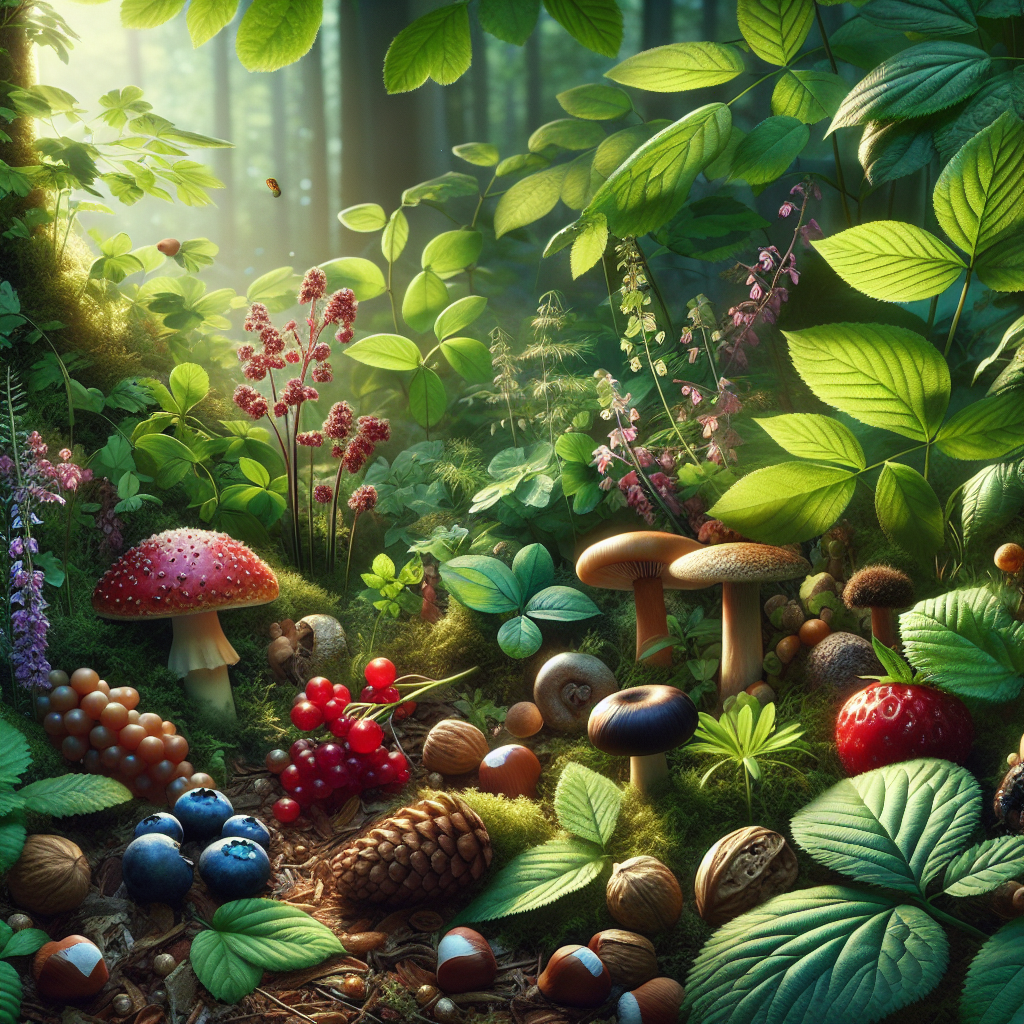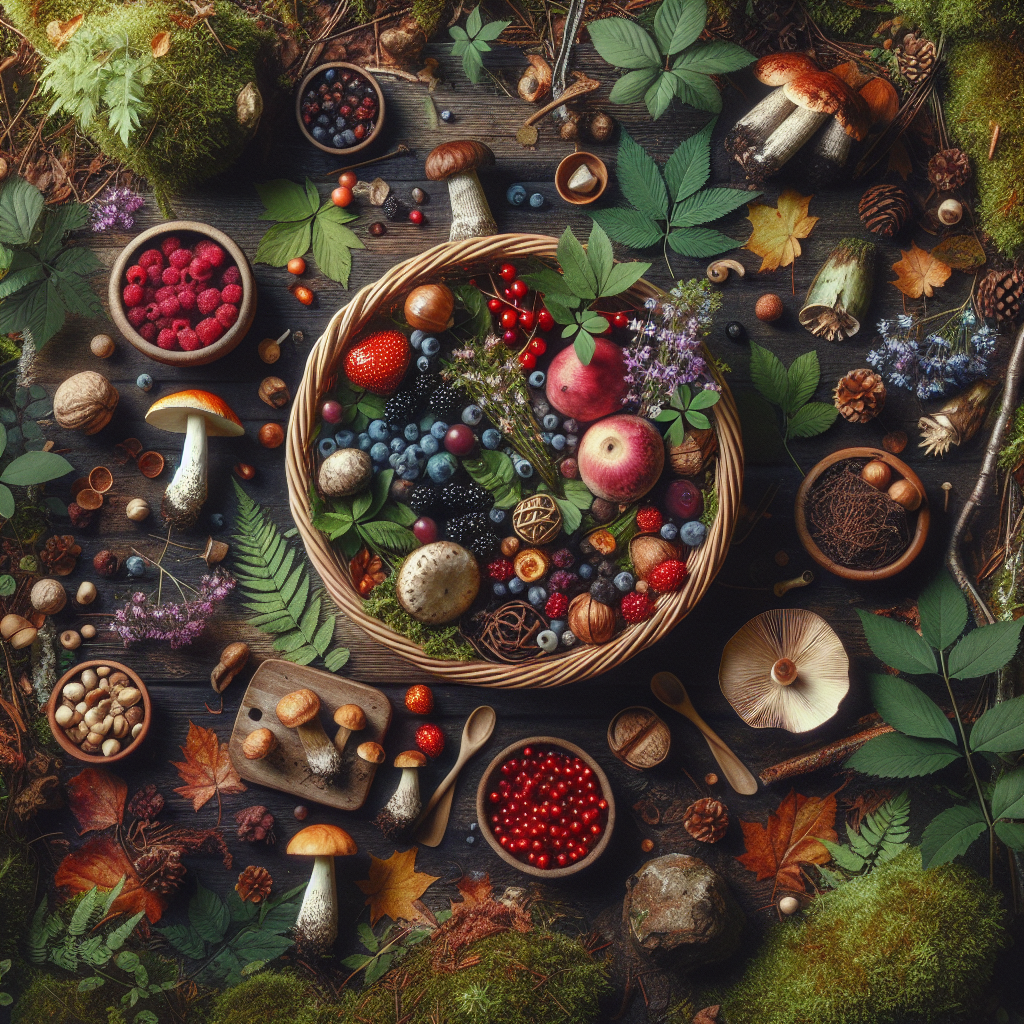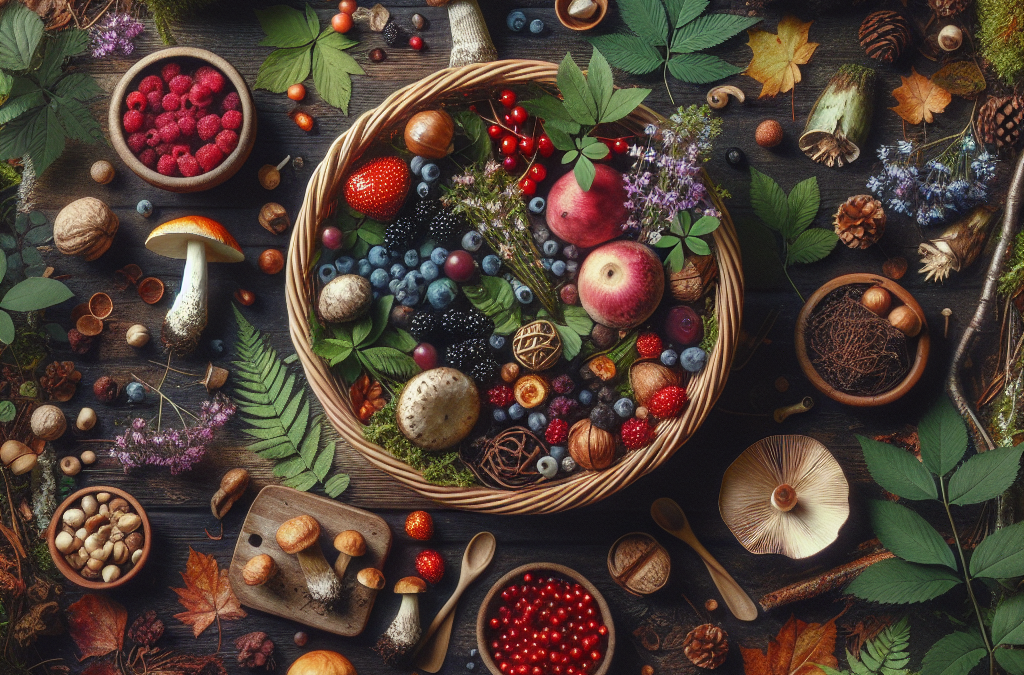As someone who deeply appreciates nature, it’s exciting to know that you can explore food sources right outside your door in an ethical and environmentally-conscious way. “Foraging for Food: Safe and Sustainable Practices” not only unlocks the mystery of edible plants but also walks you through how to adopt a safe and ethically-principled approach to foraging. Whether you’re a seasoned gatherer or a budding enthusiast, this guide provides the knowledge needed to make your foraging journey a satisfying and sustainable one.

Understanding Foraging
Foraging, in the simplest terms, refers to the act of searching for and harvesting wild food resources. It can encompass a variety of activities, from picking berries to hunting game. This practice predates civilization, playing a significant role in our ancestors’ survival.
Definition of foraging
The term ‘foraging’ might bring up images of people scouring a forest or a field in search of wild food. This is quite accurate to the definition. Foraging is the activity of finding, identifying, and gathering food from natural environments, typically involving wild plants and sometimes small animals or insects.
Historical background of foraging
Foraging has been a fundamental part of human history. Our distant ancestors relied heavily on foraged food as their primary source of sustenance. This practice continued for thousands of years and was only supplanted by agriculture around 10,000 years ago. Despite the rise of farming, foraging has continued in various forms and sizes throughout history, especially among indigenous peoples and cultures that still maintain close ties with their natural environment.
Modern day foraging and its resurgence
Today, with an increasing interest in sustainability and natural living, foraging is seeing somewhat of a resurgence in popularity. People from all walks of life are returning to this ancient practice, seeing it as a means to reconnect with nature, source fresh local food, and promote sustainable living. It’s interesting how this ancient activity is blending with modern lifestyles, creating a community of urban foragers in cities worldwide.
Benefits of Foraging
Foraging provides a unique array of benefits that go beyond the joys of a freshly picked blackberry or the taste of a wild mushroom sauce.
Improving health through nutritious wild food
Wild foods can be surprisingly nutritious. Many wild edibles contain higher levels of vitamins, minerals, and antioxidants than their cultivated counterparts. Foraging can thus offer a nutritious boost to your diet and help promote overall health.
Boosting mental health via outdoor activity
The act of foraging itself can be tremendously beneficial for mental health. It encourages spending time outdoors, physical activity, and a break from the fast-paced, technology-driven world. It offers a moment of mindfulness, of being present and engaged in a simple yet deeply rewarding activity.
Promoting food sustainability and reducing food waste
Foraging can also significantly contribute to food sustainability. By utilizing local and wild resources, we reduce the need for commercially cultivated produce, which often involves extensive use of water, fertilizer, and energy. Moreover, foraging promotes a zero-waste lifestyle as only needed quantities are harvested, reducing food waste.
Foraging Safety
While foraging is immensely rewarding, it is crucial to approach it with safety in mind.
Importance of correct plant identification
Proper plant identification is a key aspect of foraging safety. Some wild plants can be harmful or deadly if mistakenly identified and consumed. Hence, one must be thoroughly familiar with the plants they’re looking for, understanding their distinguishing features, season, and habitat.
Avoiding contamination and polluted areas
It’s also necessary to be aware of the potential risks of contamination. Foraged plants from polluted areas – near roads, industrial sites, or sprayed fields – may contain harmful toxins or chemicals. Always ensure the foraging location is clean and safe.
Understanding legal permissions and restrictions
Lastly, it’s important to understand and follow the local laws and regulations related to foraging. Some areas may strictly prohibit foraging, while others may have certain rules regarding what can be gathered and how much.
Tools and Techniques for Foraging
Foraging requires more than just a basket and keen eyes. Having the right tools and techniques can enrich the experience and ensure sustainability.
Essential foraging equipment
A basic foraging kit might include a sturdy basket, a pair of gardening gloves, a small knife or scissor for harvesting, and a guidebook for plant identification. It’s also wise to carry a first-aid kit for any unexpected injuries.
Optimal environments for foraging
Foraging can be done in a variety of environments, from woodlands to coastal areas. The best foraging spots are usually those with a rich biodiversity. A local nature reserve, a forest, or a meadow are great places to start.
Techniques for sustainable foraging
When foraging, it’s vital to ensure that your practices are sustainable. Harvest only the amount you need and always leave enough plants for regeneration. Avoid damaging the plants or their habitat and remember to tread lightly in the environment.

Popular Edible Plants and How to Identify Them
There are countless edible plants out there, but some are more commonly foraged due to their ease of identification and popularity.
Common edible wild plants
Some common edible wild plants include dandelions, nettles, wild garlic, and plantain. These plants are generally easy to identify and can often be found in abundance.
Edible mushrooms and fungi
For fungi fans, wild mushrooms can be a delicious foraged treat. However, mushroom foraging should be approached with extreme caution, as some species can be deadly. Always ensure proper identification and if in doubt, leave it out.
Invasive edible plant species
Interestingly, some invasive plant species like Japanese knotweed, garlic mustard, and purslane are also edible and foraging them can help control their spread.
Foraging Etiquette and Conservation
Just like any outdoor activity, foraging has its set of etiquette and conservation principles one should adhere to.
Respecting private property and public lands
Firstly, always respect private properties and public lands. Obtain permission where needed and follow any rules or restrictions imposed by the landowners or local authorities.
Taking only what’s needed
While it might be tempting to fill your basket to the brim, it’s important to take only what you’ll use. This not only reduces food waste but also ensures the sustainability of the plant species and their habitat.
Contributing to conservation efforts
You can contribute to conservation efforts by foraging responsibly, reporting any suspicious activities, and spreading awareness about the importance of conserving our natural resources.
Potential Risks and Dangers of Foraging
Foraging isn’t without its risks and dangers. Awareness and preparedness can help mitigate these potential pitfalls.
Plant misidentification
Perhaps the most significant risk in foraging is plant misidentification. Consuming a wrongly identified plant can lead to serious health issues, ranging from mild stomach upset to severe poisoning. Always double-check your identification and never eat anything you’re unsure of.
Food poisoning
Improper handling, storage, or cooking of foraged food can also lead to food poisoning. It’s essential to know how to safely handle and prepare wild edibles to avoid such issues.
Encounters with wildlife
When foraging, you may encounter wildlife. Stay vigilant, give animals their space, and remember that you are a visitor in their habitat.
Foraging Workshops, Classes, and Community
To learn and improve your foraging skills, consider joining workshops, classes, and communities dedicated to this craft.
Participating in local foraging workshops or courses
Joining a local foraging workshop or course is an excellent way to get started. These classes offer hands-on training, often led by experienced foragers who can share valuable knowledge and tips.
Joining foraging communities or clubs
Foraging communities or clubs offer a chance to connect and learn from like-minded individuals. These groups often share their foraging finds and experiences, providing a wealth of knowledge for both beginners and seasoned foragers.
Learning from experienced foragers
Experienced foragers often have invaluable insights developed over years of practice. Learning from them can enhance your understanding and skills in foraging.
Preservation and Preparation of Foraged Foods
Once you’ve collected your wild treasures, knowing how to preserve and prepare them is crucial.
Properly cleaning and storing foraged foods
Foraged foods should be carefully cleaned to remove any dirt or insects. Depending on the type of plant, they can be eaten fresh or preserved by drying, freezing, or canning for future use.
Cooking tips and recipe ideas for wild food
Wild foods can be remarkably versatile in the kitchen. Discovering unique recipes and cooking techniques can help you get the best out of your foraged bounty.
Safety measures during food preparation
Always ensure food hygiene and safety when preparing foraged food. This means thoroughly washing the produce, cooking to appropriate temperatures, and storing properly to avoid spoilage.
Future of Foraging and its Sustainability
Looking into the future, foraging holds promising potential for sustainability, biodiversity, and climate resilience.
Foraging as a part of sustainable future
Foraging can contribute to a sustainable future in various ways. By sourcing food locally, it minimizes the carbon footprint associated with food transport. It also promotes biodiversity by creating demand for diverse wild plants.
Impact of climate change on foraging
However, foraging is not immune to the impacts of climate change. Changing weather patterns may affect the distribution, abundance, and growth cycles of wild plants. This underscores the importance of climate resilience and adaptation strategies.
Role of foraging in food security and biodiversity conservation
Lastly, foraging can play a pivotal role in food security and biodiversity conservation. It encourages the utilization of local, diverse plant species, many of which are underutilized but nutritionally rich. By promoting these wild edibles, we can diversify our food systems while conserving our natural biodiversity.

